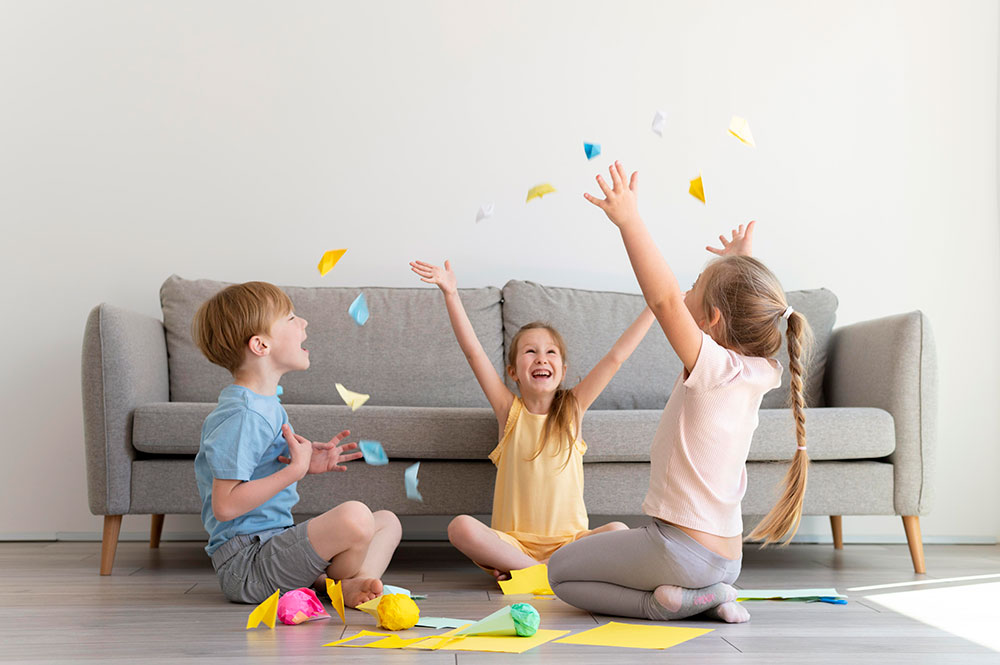
The four walls of your own home are a cave full of treasures that can be used for educational play with your child. Shipping boxes, baking soda, shaving cream, even dried beans and a used toothbrush will come in handy. We've got a few suggestions for developmental play activities for preschoolers and school-aged children.
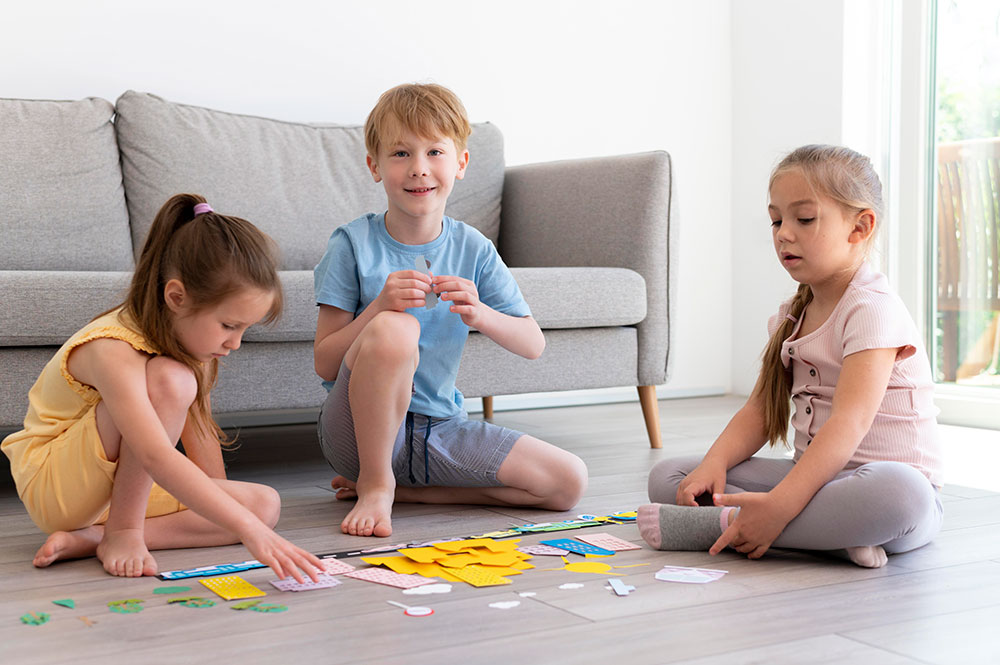
If you don't yet have a cabinet or box for "stuff" in your apartment, we suggest you remedy this oversight. "Stuff" can be anything that at first glance seems like it wouldn't have much use, but after a moment's reflection, turns out to be a fantastic material for an interactive or sensory toy for a child . These are things we often throw away, like toilet paper rolls, egg cartons , jars, old toothbrushes, popsicle sticks, old socks, or leftover Christmas ribbons. For a child, the opportunity to make a toy themselves is not only incredibly fun but also an exercise that develops creativity and patience, giving them a chance to express themselves. Furthermore, the satisfaction of playing with a handmade object is immense, as is the pride of showing it off to family or friends.
A hole in a sock? That's wonderful!
Thick woolen socks are best for this activity – you can thread ribbons through their eyelets. Besides those satin and chiffon socks left over from unwrapping presents, woolen yarn and shoelaces also work well. Simply thread them through the hole in the sock and tie loops at both ends to prevent the ribbons from slipping out of the sock when you pull them. The ribbons should be about 10-20 cm long. Now, simply thread all the ribbons into the center of the sock and ask your little one to pull the loops and pull them out.
Babies around one or two years old will be most interested in this toy, for whom learning about the sock's new function will be a unique experience. Children will also have the opportunity to touch materials with different textures, which will greatly enhance their tactile development.
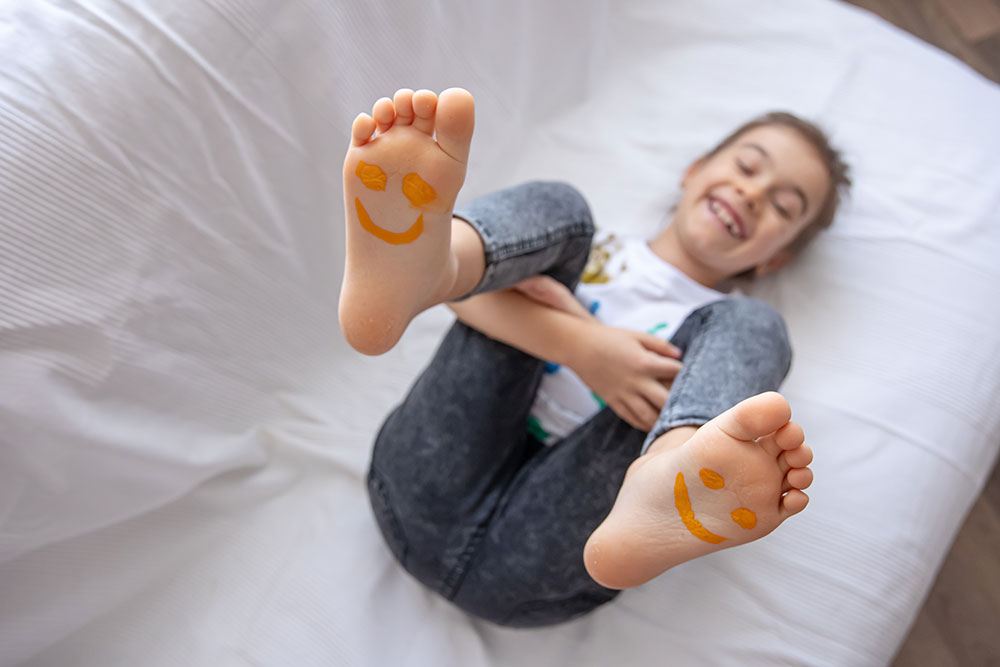
Brush, toothpaste, cup, warm water…
On a piece of paper or cardboard, draw a head with a very wide open mouth. Then, the child can color in the hair, face, inside of the mouth, or T-shirt of the cartoon character. The next step is up to the adult: using hot glue, glue white bean seeds onto the teeth. Of course, there can be more than the actual teeth in the child's mouth. Once the glue dries and the teeth are firmly in place, give the child a toothbrush and ask them to brush the teeth of the friend they drew.
For a more advanced version, you'll need two sheets of paper or cardboard. On one, draw a hippopotamus head, and on the other—folded in half—draw a wide-open mouth that will close. Glue bean-shaped teeth into the mouth. After all, hippos should also pay attention to oral hygiene! This interactive activity for preschoolers is a great introduction to their first independent attempts at brushing their own teeth.
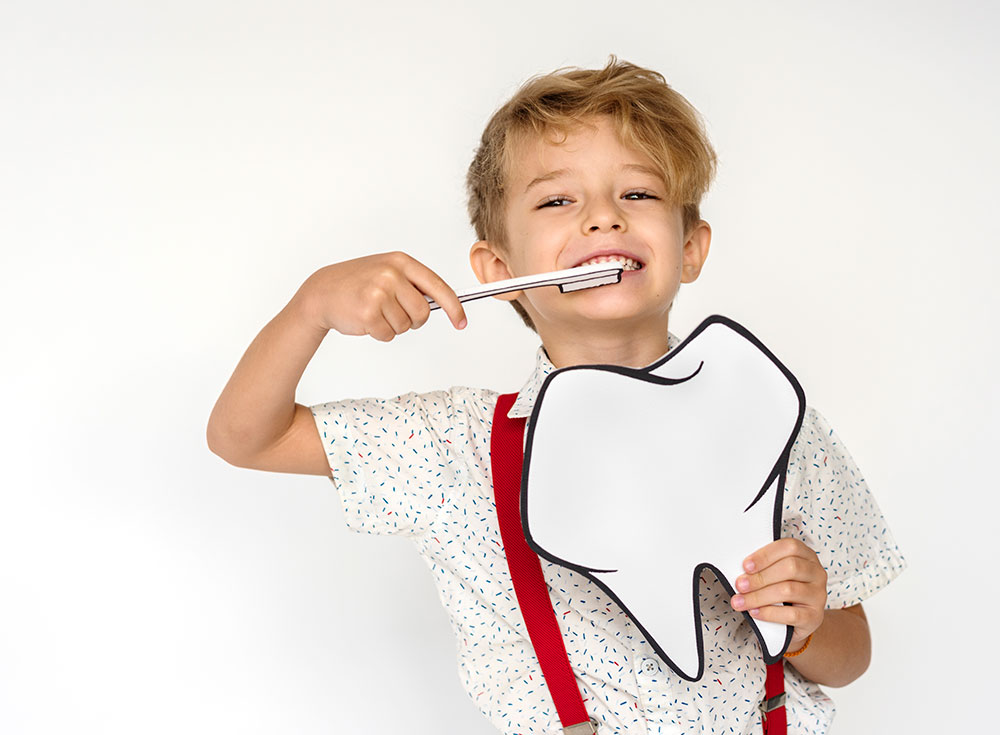
Education through play: 3D painting
For this activity, you'll need glue (preferably bookbinding glue), shaving cream, paints or food coloring, a brush, and cardboard or paper. Before mixing the ingredients for the puffy paint, draw a template on the paper of what you want to cover with colors. These can be favorite motifs like animals, dinosaurs, or cartoon characters, but for a more educational activity suitable for school-aged children, we recommend the shapes of letters, numbers, or the Earth with the continents marked. Then, mix the glue with the shaving cream until a smooth paste forms. Add the coloring, and the puffy paints are ready to paint. The child transfers them to the previously prepared templates, creating raised images instead of flat designs.
Younger children will surely have a lot of fun painting with their fingers. The soft, fragrant, and colorful foam offers a wealth of sensory experiences. However, if your child is young and tends to taste non-edible substances, we suggest painting with a brush under the watchful eye of a parent or guardian.
An option for the brave: let your child paint on their clothes. Both girls' and boys' blouses and T-shirts at Endo are made of natural materials that can be washed at higher temperatures. Many also feature patterns that look hand-painted. Why not decorate them a bit more?

Interactive exercises for children
Educational arts and crafts alone can become boring after a while. After all, children need exercise! There's nothing stopping you from incorporating learning elements into your physical activity. So, let's prepare 30 sheets of paper in five different colors (e.g., green, yellow, blue, red, and orange). On 25 of them, paint or glue black shapes: circles, triangles, squares, circles, and hearts. Leave 5 blank. We'll also paint the same shapes on individual white sheets of paper.
Place all the cards on the floor, with the colored ones with gridded shapes in one place and the white ones in a line slightly above them. Place a ball or stuffed animal on top of the shape on the white card and ask the child to reach it by moving only along the shape indicated by the toy. You can replace the white cards with shapes with colored blank cards and ask the child to move only along the indicated color. You can also choose the most challenging option, which is to walk only along one color and one shape. Just remember that for physical exercise, unlike sitting at a desk, a child needs comfortable, loose clothing. At Endo, we have a wide selection of blouses and T-shirts for girls and T- shirts and long sleeves for boys .
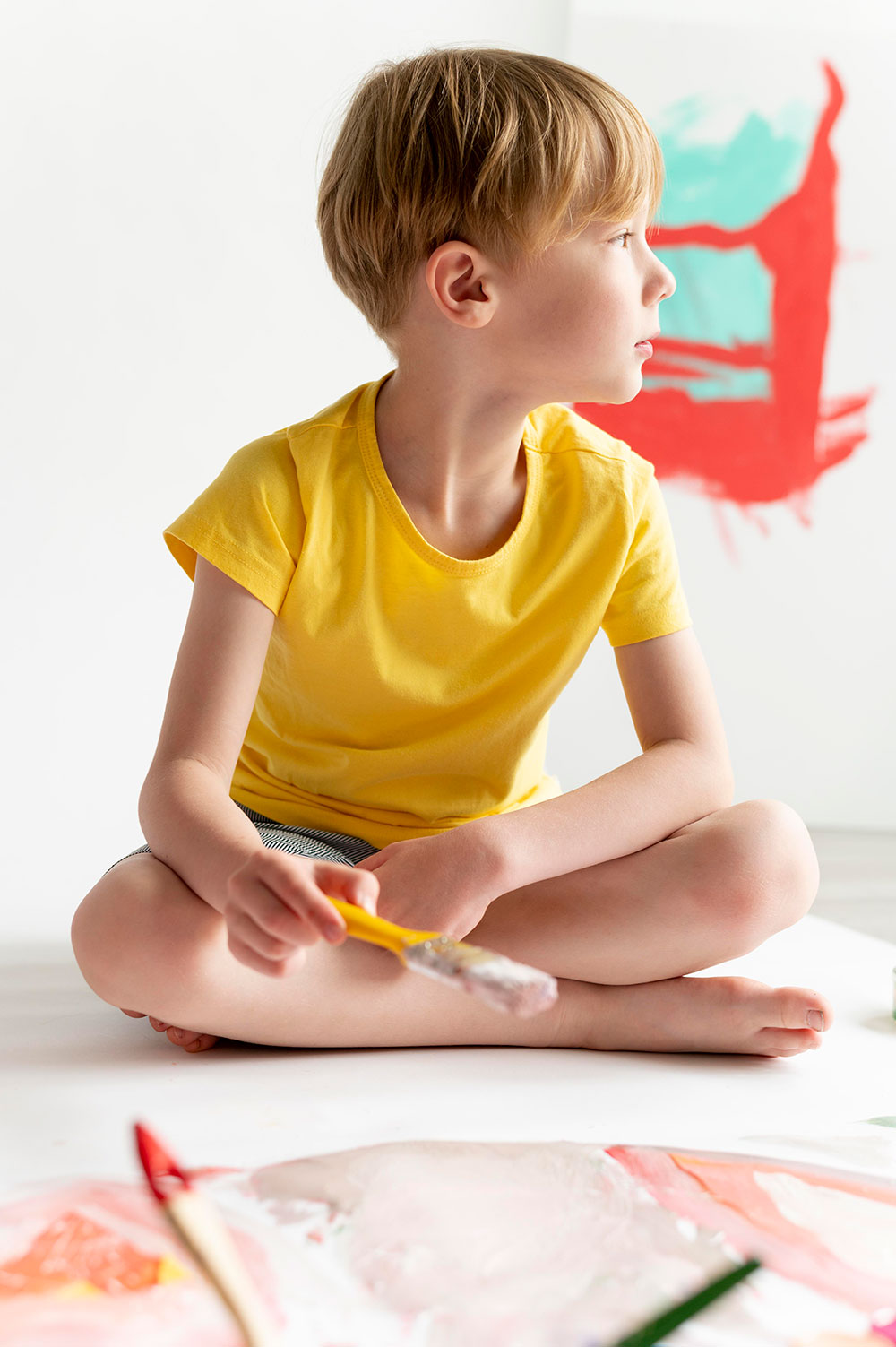


Podziel się:
Why is it worth taking your child to the theater?
One Planet - Endangered Animals - Meet the animal heroes from Endo children's T-shirts